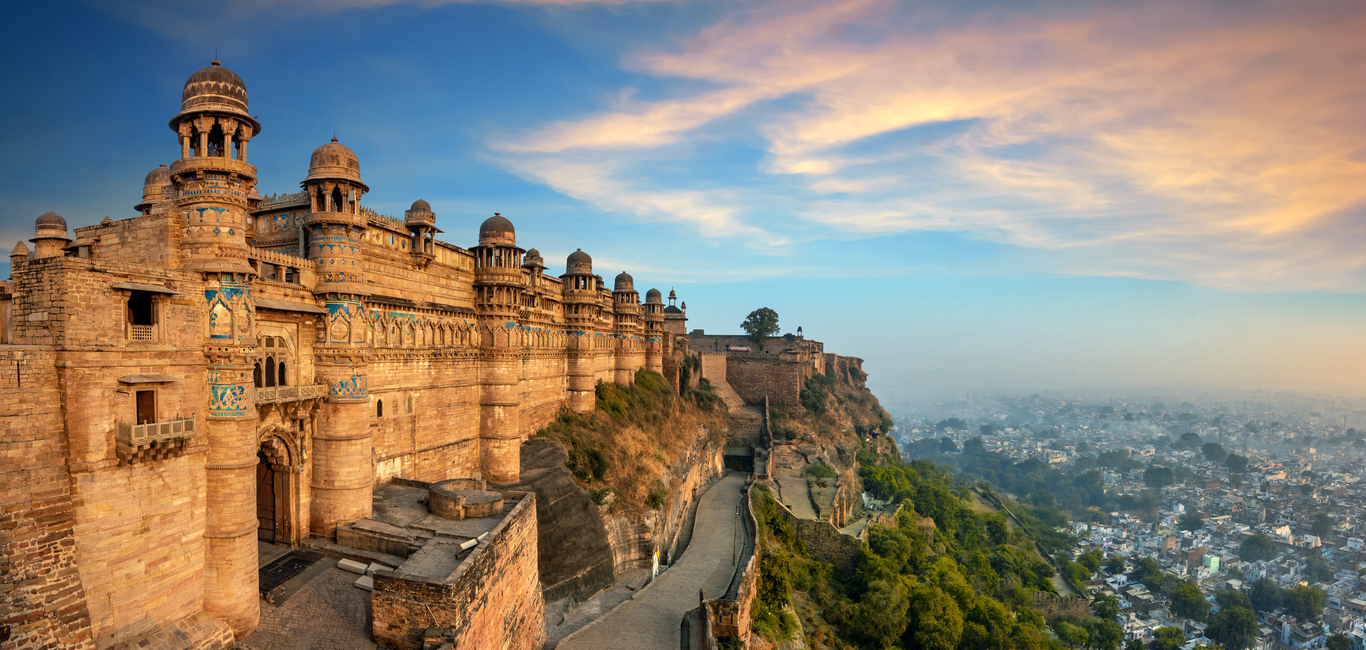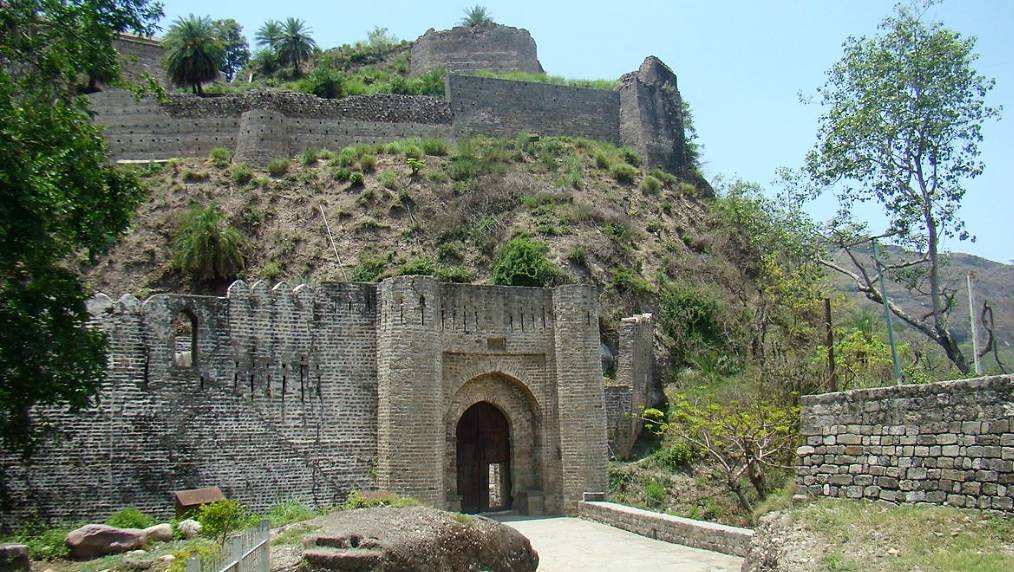Historic Hampi, set on the banks of river Tungabhadra is world-renowned for the ruins of the glorious capital of the Vijayanagar empire. It was described by the Portuguese traveler Domingo Paes as “being as large as Rome” and the best-provided city in the world”. The famous capital was founded by the two brothers Hukka (Harihara) and Bukka in 1336. It was ruled by 23 kings from four dynasties, over 300 years. Under Krishnadevaraya and Achyutaraya, Hampi attained glorious heights. In 1564, they were finally defeated by the Muslim rulers of North India in the disastrous Battle of Talikota. Subsequently, the flourishing capital witnessed mass-scale pillaging. The magnificent city finally lapsed into decline and abandonment. Its ruins still reflect the glory of the bygone era and features on the list of the World Heritage Sites of UNESCO. Today, the ruins of Hampi are spread over an area of 27 sq. kms. and are a veritable open-air museum.
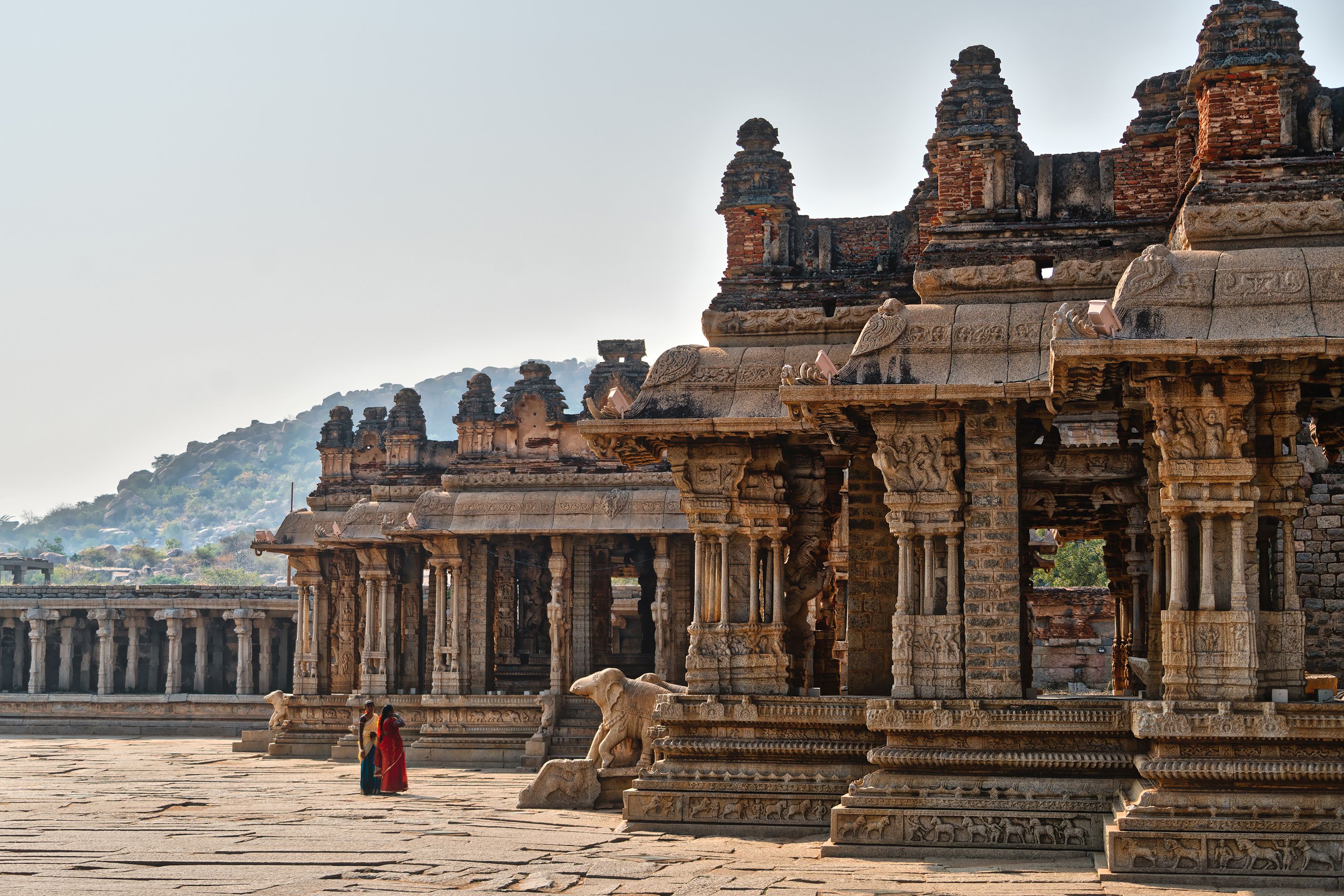 Vitthala Temple: This magnificent temple complex is undoubtedly the best example of Vijayanagar art and architecture. Its construction was started in 1513, by Krishnadevaraya, but was not completed even after the shifting of the capital to Penukonda in 1565. The impressive Kalyana Mantapa and the exquisitely carved stone chariot in the courtyard are the main attractions. The technical conception is so ingenious that the stone wheels of the chariot rotate. Equally impressive are the 56 musical pillars in the large Ranga Mantapa.
Vitthala Temple: This magnificent temple complex is undoubtedly the best example of Vijayanagar art and architecture. Its construction was started in 1513, by Krishnadevaraya, but was not completed even after the shifting of the capital to Penukonda in 1565. The impressive Kalyana Mantapa and the exquisitely carved stone chariot in the courtyard are the main attractions. The technical conception is so ingenious that the stone wheels of the chariot rotate. Equally impressive are the 56 musical pillars in the large Ranga Mantapa.
Lord Virupaksha Temple: The temple complex is dedicated to Virupaksha, an aspect of Lord Shiva and the guardian deity of the Vijayanagar kings. Its exquisitely carved 50 m. high gateway was renovated in 1510, by Krishnadeva Raya. Within the temple, the courtyard is many small shrines and pillared halls.
Lotus Mahal: This graceful structure built in the women’s’ enclosure resembles the petals of a flower opening to the sun. Nearby are relics of a watchtower, which was once guarded by eunuchs. Royal ladies also watched the festivities from here.
 Ugra Narasimha: The 6.7 meters high splendid sculpture of Ugra Narasimha is seated under a canopy of seven hooded snakes, carved out of a single stone. To the left of the statue is a huge linga (Badavi linga) set under running water.
Ugra Narasimha: The 6.7 meters high splendid sculpture of Ugra Narasimha is seated under a canopy of seven hooded snakes, carved out of a single stone. To the left of the statue is a huge linga (Badavi linga) set under running water.
Mahanavami Dibba or the House of Victory: It was built by Krishnadevaraya afters Victorious expedition to Orissa. The spaces between the rows of the plinth- moldings are ornately carved.
Queen’s Bath: The square bath was surrounded by filigreed balconies. Lotus headed fountains once arched corridors, gallery verandahs, and projecting sprouted perfumed water in a minor waterfall into the pool. Some other attractions are the Elephant Stables and Hazara Rama Temple etc.
Around Hampi
Jog Falls
Jog Falls, the highest waterfalls in India are also ranked among the highest in the world. Sharavati river drops down from an elevation of over 900 ft., amidst the lush forest and creates four distinct cascades known as Raja, Rani, Roarer, and Rocket. ‘Raja’ – the highest among the four, plunges into the vapor shrouded pool. It is joined by ‘Roarer’, about 100 ft. below and then come ‘Rocket’ and ‘Rani’ cascades. The falls are more voluminous during the monsoons, but the most appropriate time to visit is from Dec. to Feb. A panoramic view of the Linganamakki dam can also be enjoyed from here.
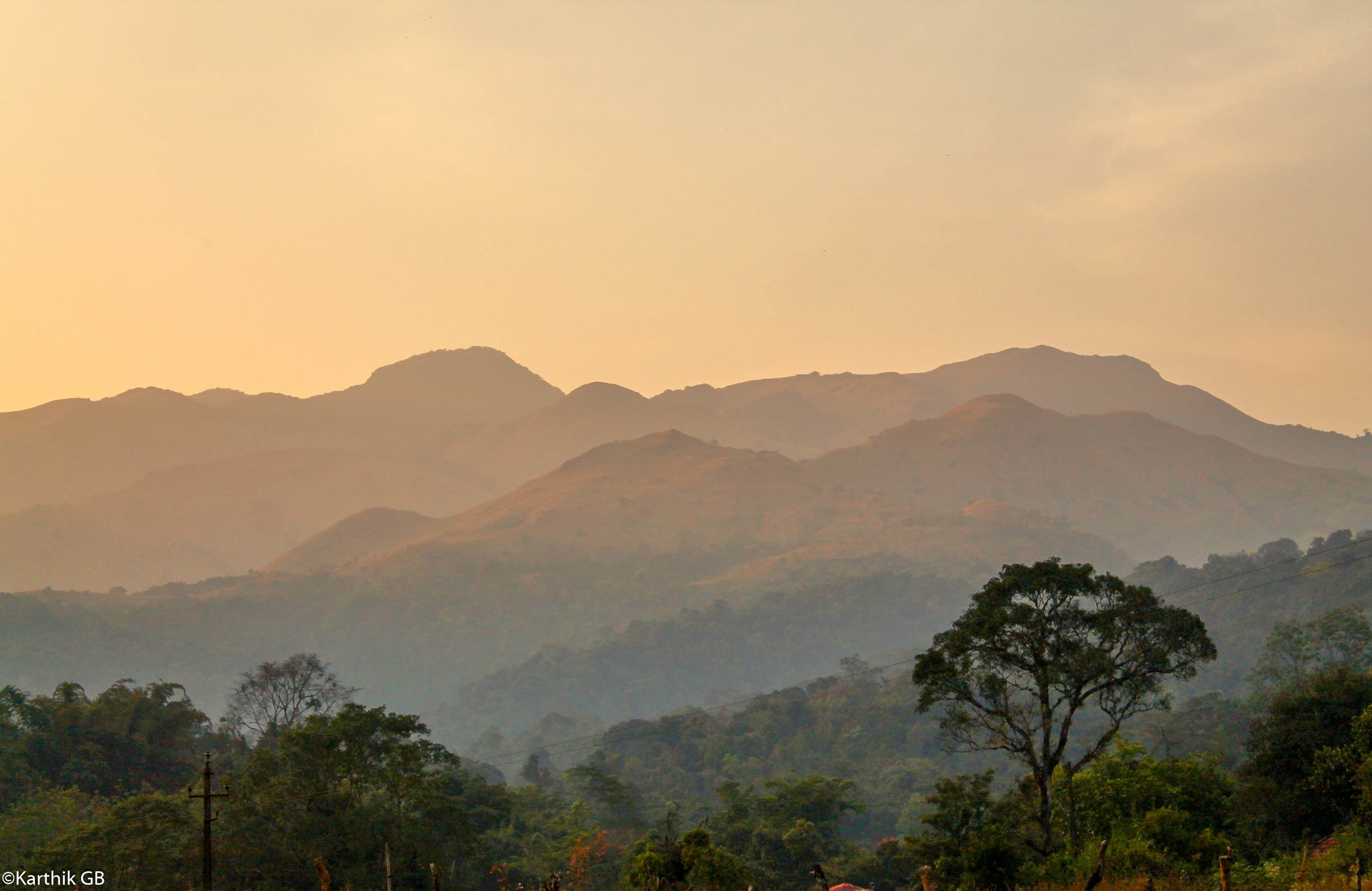 Kodagu
Kodagu
The charming district of Kodagu nestling amidst the lush Western Ghats is popularly known as the ‘Scotland of India’ and the Kashmir of the South’. Misty mountains, verdant valleys, serpentine streams, cascading falls, thick tropical forests, and miles of spice, paddy, and coffee plantations make the region a veritable paradise for nature lovers. The name Kodagu is said to derive from a Kannada word “Kudu” meaning steep or hilly. This “land of oranges, cashews, cardamoms, and coffee” is also known for its distinct cultural heritage and martial traditions.
Madikeri (Mercara)
The picturesque hill resort perched at an altitude of 4,000 ft. is the district headquarters of Kodagu. It was founded by Muddu Raja of the Haleri dynasty in 1681 and became the favorite resort of Britishers, as it reminded them of scenic Europe with lush hills and verdant valleys.
Raja’s Seat: This fine viewpoint is truly spectacular during sunset time.
Madikeri Fort: The hilltop fort was built by Lingarajendra Wodeyar II between 1812- 1814. It fort has a small museum in St. Mark’s Church.
Omkareswara Temple: This unique shrine in the middle of a lake is dedicated to Lord Vishnu and Lord Shiva. It was built by King Lingarajendra in 1820 and is a fine blend of Hindu and Muslim styles of architecture.
Abbey Falls: The beautiful falls are surrounded by coffee and pepper plantations.
Bhagamandala: The pilgrim center on the confluence of three rivers Kaveri, Kanika, and the underground Suiyothi is famous for Bhandeshwara temple.
Bylekuppe: It is one of the largest Tibetan settlements in South India and is famous for monasteries, handicrafts, carpet factories, and an incense factory.
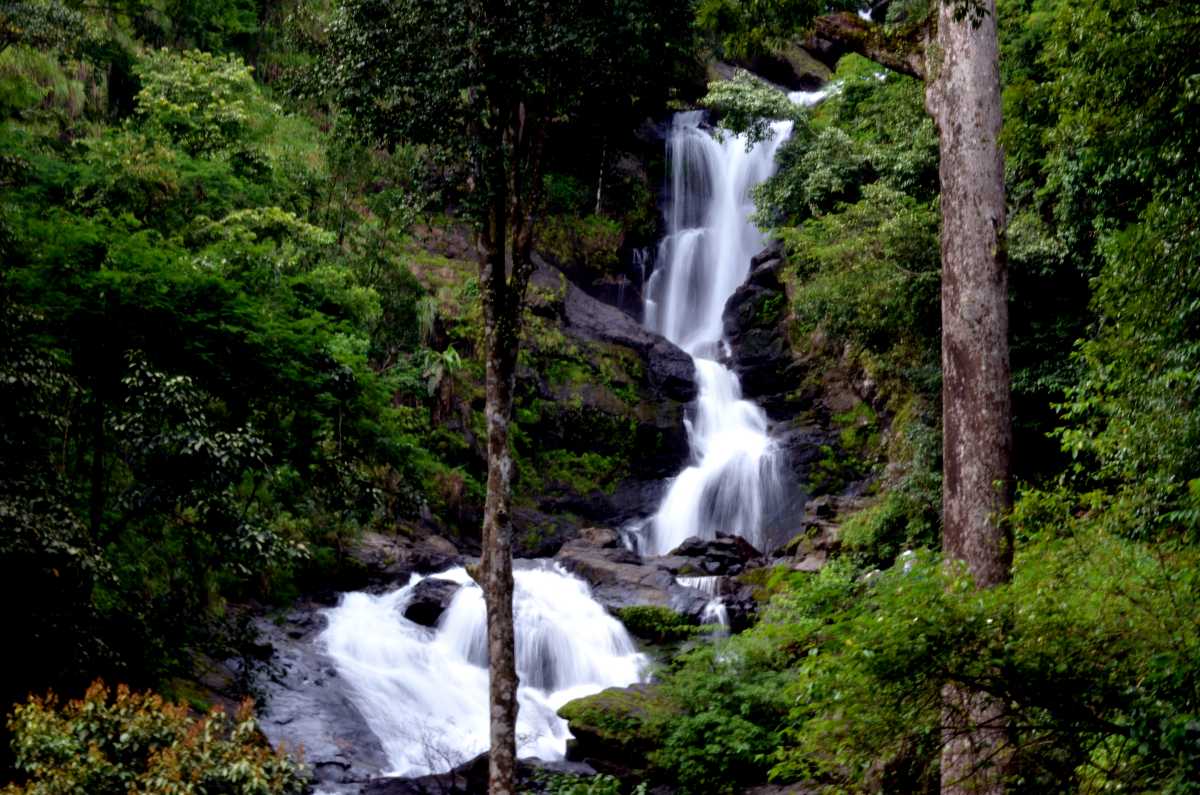 Iruppu Falls: The cascading falls descent down from a height of 170ft. in two distinct stages, amidst dense forests near the
Iruppu Falls: The cascading falls descent down from a height of 170ft. in two distinct stages, amidst dense forests near the
Rajiv Gandhi National Park: The Rameshwara Temple near the Lakshmana Theerthariver, attracts a large number of devotees. Rajiv Gandhi National Park, Nagarhole (77 kms.) This delightful park covers an area of 284 sq. kms. along river Kabini. The jungles full of rosewood, teak, sandal, silver oak are a haven for rich and varied wildlife. The key fauna includes elephant, tiger, panther, gaur, deer, wild dog, langur, and reptiles like king cobra, etc. One can undertake jungle safaris on elephant back. The best season to visit is from June to October. The Heballa elephant camp is a must-visit site.
Tala Kaveri: It is the source for sacred river Kaveri, which originates on the slopes of Brahmagiri Hills. Every year on the auspicious occasion of Tula Sankaramana (17 October), a spring of water sprouts at a particular and foretold moment. Bathing in this water is considered to be very beneficial.


